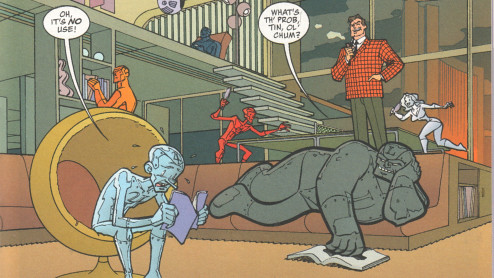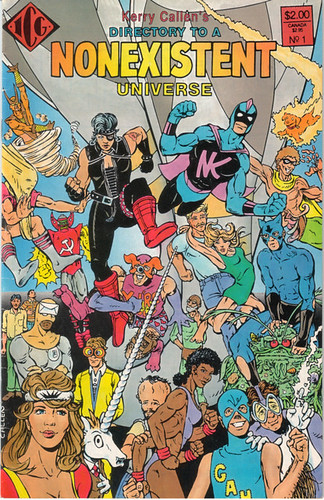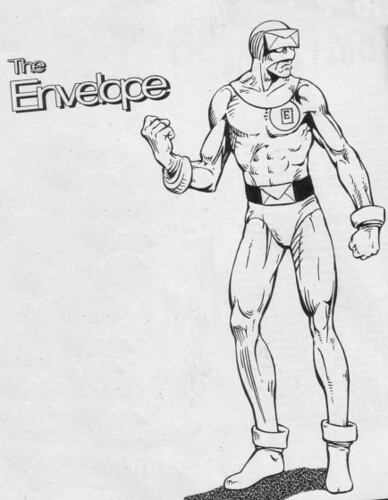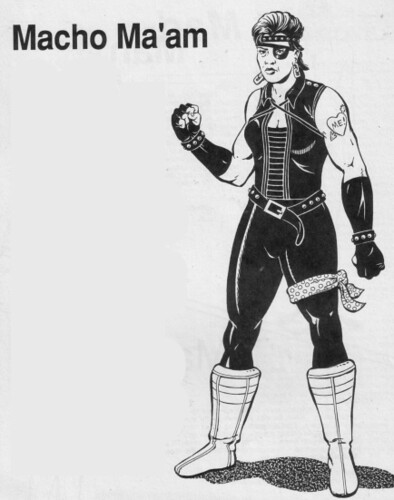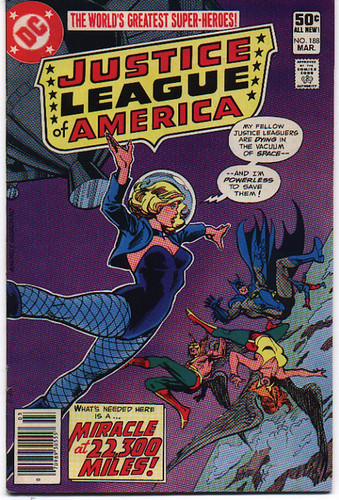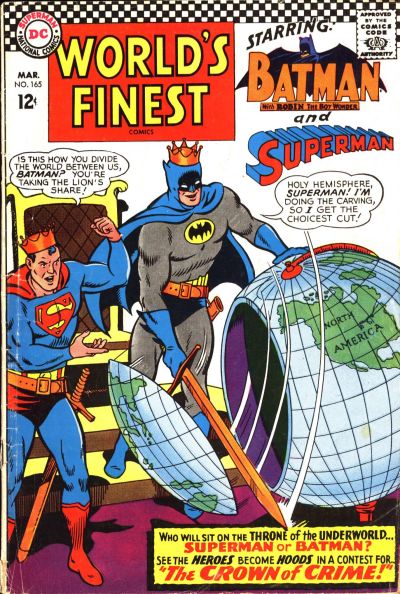Directory to a Nonexistent Universe, December 1987. Created by Kerry Callen; published by Independent Comics Group.
The 1980s were rife with superhero universe directories. Marvel had the OHMU; DC published Who's Who: A Definitive Guide to the DC Universe and both soft and hardcover versions of a History of the DC Universe; I'm sure there were others. In the midst of this came this parody directory, and it was right on target.
Callen faithfully imitated the traditional directory format: each page had a pin-up style illustration of the character alongside a text box detailing his or her origin and powers. A horizontal panel ran across the bottom of each page, showing the hero (or villain, or oddball character -there were some of those, too) in action. A closer look reveals the loving mockery in each entry.
Speaking of omens, here's the full text for The Envelope:
Origin: During a breezy afternoon in June, Wayne Allen emerged from the local store with his newly bought sack of groceries. Suddenly realizing he had forgotten his checkbook, Allen set the groceries on his car hood and went back inside. When he returned to his car, his bag of groceries had vanished!
Infuriated by the event, Allen vowed to avenge himself by waging war on most criminals. He spent the next three and a half days training himself to the peak of physical and mental perfection.
That night, as Allen sat at the desk in study, a strong breeze blew through his window, causing an envelope to fly off his desk and flutter onto the floor. Seeing this event as an omen, Allen put on a tightly fitting costume and set out into the darkness to find his groceries.
Powers: The Envelope has no actual super-powers, but he is still a darn good athlete. Probably better than you are.
I think we have Christian Bale's next role.
The book is clearly written for fans, readers who know the conventions and tropes of superhero comics - well, for people like me.
Take the entry for Macho Ma'am: Callen relates how Tulip Overton built a device to increase her strength after losing an arm-wrestling tournament, and, of course, now fights crime. Her powers section says "However, since the machine which increased her strength was built in anger (catch this irony), the madder she gets, the weaker she becomes." Isn't that just perfect silver-age silly-science? I wouldn't be surprised if that concept had been used seriously somewhere.
Or this entry for Grow-Arm-Hair Lad: After relating how mutant Harry Kidd discovered his, er, amazing power, stole his dad's razor, and told his mother he was in a play in order to get her to sew his costume, the text concludes "Then this lying little thief had the gall to want to fight crime."
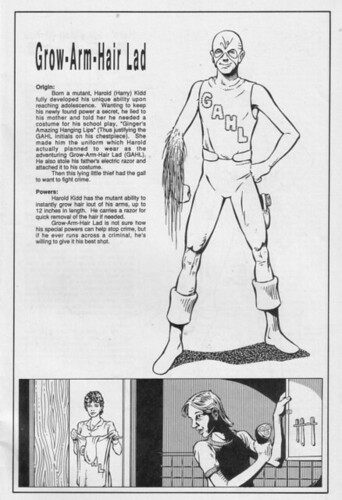
Callen includes twenty-three characters --heroes, villains, freaks, some cheesecake, and a dog-- as well as three super-groups and a bonus story that parodies the grand, every-hero-in-sight epics of the time such as Secret Wars and Cosmic Odyssey. Not all of the entries are home runs: Night Knight looks like he was intended to be a "serious" hero at one time, and Osborn the Unicorn seems a little too much of a riff on Cerebus, but overall the comedy is consistent and clever.
The art adds a great deal to the success of humor; with substandard illustration, the book would have been much flatter, but Callen shows competent draftsmanship for the pin-ups and a good sense of design in action panels and the short story. I just loved the detail he put into his characters; check out the stamp motif on The Envelope's chest emblem.
I have always felt that creators satirize those things they don't like and parody those things they love. D2NU is a loving parody that captures all the silliness of the conventions of superheroes and yet maintains that spirit of fun and joy that superhero comics can have. At the same time, it is mocking the exagerrated importance of these kinds of directories and the trend toward continuity-uber-alles that they seemed to be part of.
Special bonus: Kerry Callen is apparently still at work! His Halo and Sprocket series features clever writing and even better art than 18 years ago. Check it out here and go pick up his stuff - I know I will be.
